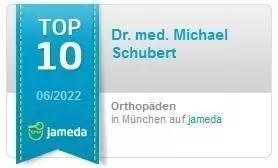Our spine is a fascinating invention with a very well thought-out structure and incredible functionality. Unfortunately, many people neglect their spine and then struggle with painful back problems in old age.
Back pain can be caused by various ergonomic factors in the workplace. These include, for example, frequently lifting heavy objects, standing for long periods of time or sitting in an unfavorable position. Being overweight and smoking can also lead to back problems. It is therefore important to lead a healthy lifestyle and to pay attention to lifting and carrying correctly when working and to an ergonomic design of the workplace. You can effectively prevent problems with special back exercises for the office and a dynamic sitting position.
Even small changes in everyday life can have a significant impact on the health of your back. For example, an upright posture, more exercise and conscious relaxation to reduce stress can help you to be pain-free. If you want to go even further, you can specifically prevent pain through back-friendly sports and easy-to-do muscle-building exercises.
The spine - A fascinating invention in our body
Our spine is a fascinating invention with a very well thought-out structure and incredible functionality. Unfortunately, many people neglect their spine and then struggle with painful back problems in old age.
Over the course of evolution, the human anatomy has developed an incomparable feature - the spine. Its unique shape allows us to stand upright and stand out from other living beings.
Although it bears the body weight, it is not a rigid, straight column, but curved - more precisely in a double S shape. In the neck area it bends gently forward, in the chest area backwards and in the lumbar area forwards again. This natural springiness ensures shock absorption and load distribution. Without this curvature, the weight would always press on the intervertebral discs and increase the risk of damage to the intervertebral discs.
From top to bottom, the spine has seven cervical vertebrae, twelve thoracic vertebrae, five lumbar vertebrae, five fused sacral vertebrae and four to five coccygeal vertebrae.
Each vertebral body of the spine is connected to the next by an intervertebral disc, which forms movement segments. The intervertebral disc is an essential element of the supporting part of the spine and acts as a flexible buffer.
When should you consult a specialist?
In addition to easily treatable back pain, it is essential to seek professional help for specific back pain. "Specific" back pain refers to back pain that can be diagnosed through clear physical findings. These include herniated discs, arthrosis, stenosis and more.
Typical symptoms of this type of back pain are severe pain in the lower back area, which can radiate into the buttocks, leg or even foot. Loss of sensation or paralysis in one leg can also occur. The range of possible symptoms that have their origin in the back is very broad.
The Apex Spine spine center in Munich is internationally known for its expertise in the diagnosis and treatment of back, neck and spine problems. We, the spine specialist team, consisting of orthopedists, neurosurgeons, physiotherapists and sports therapists, offer a wide range of conservative treatment methods as well as modern surgical therapies. Our motto is: "Advantage through specialization".
Our credo is to provide our patients with the best possible diagnosis and successful therapy.

